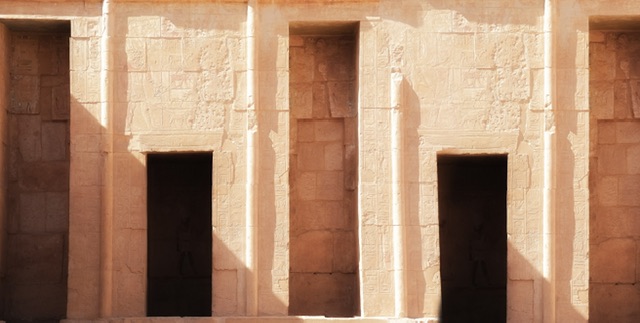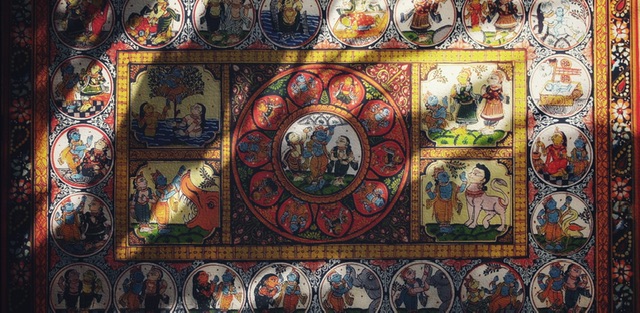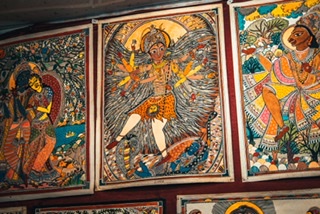Even though Gujarat is not one of the primary tourist destinations, it boasts of a vast number of archaeological sites in India, implying a very rich and old heritage. Located at the foot of the Girnar hills, Junagadh district is 355 kms southwest of state capital Gandhinagar and Ahmedabad. Literally translated, Junagadh means ‘Old Fort’. Junagadh has been privy to the secrets of varied dynasties that form a pivotal part of the history of India. Apart from being home to various places of religious interests, you can find remnants from the Mauryan Dynasty, Solanki Dynasty, rise and fall of Portugese invasions, Chudasama Rulers, Mughal rule and the British Empire.
Somnath Temple: This abode of Lord Shiva is the first of the twelve Jyotirlingas situated across the country. Originally believed to have been built by the Moon God himself, this temple has been rebuilt more than seven times. This religious destination was earlier known as ‘Prabhas Patan’ and is believed to be the place where Lord Krishna left his mortal body. Somnath finds mention in the Puranas as well as the Mahabharata. It is here that lord Shiva relieved Chandra of a curse placed on him by Daksha Prajapati. According to our Puranas, this temple was rebuilt in silver by Ravana and later in sandalwood by Lord Krishna.
Uperkot Fort: An impressive fort, Uperkot, located on a plateau in the middle of town, was originally built during the Mauryan Dynasty by Chandragupta in 319 BCE. The fort remained in use until the 6th century, when it was covered over for 300 years, then rediscovered in 976 CE. The fort was besieged 16 times over an 800-year period.
An inscription with fourteen edicts of Ashoka is found on a large boulder within 2 km of Uperkot Fort. The inscriptions carry Brahmi script in a language similar to Pali and date back to 250 BCE. On the same rock are inscriptions in Sanskrit added around 150 CE by Mahakshatrap Rudradaman I, the Saka (Scythian) ruler of Malwa, a member of the Western Kshatrapas Dynasty. Another inscription dates from about 450 CE and refers to Skandagupta, the last Gupta emperor. Old rock-cut Buddhist ‘caves’ in this area, dating from well before 500 CE, have stone carvings and floral work. There are also the Khapra Kodia Caves north of the fort and the Babupyana Caves south of the fort.
When the Portuguese took over the ports of Daman and Diu in the 16th century, a fifteen feet long cannon, made in Egypt in 1531, was abandoned at Uperkot Fort by a Turkish admiral opposing the Portuguese forces at Diu. Known as the Nilamtope Cannon, it can now be found on the western wall of the fort.
Gir Forest National Park: Situated about 30km from Somnath is the wildlife reserve which is the sole home to the Asiatic Lion. Even though it is the only place that resides wild lions outside of Africa, its natural habitat is home to a variety of flora and fauna. The raw and natural beauty of this place is something to be experienced!
Mul Dwarka: This small sea-side village on the coast of Saurashtra is the actual site of the city of Dwarka (Mahabharata). Various marine excavations done by ISRO under Dr. S.K. Rao have now proved that the city existed and Mahabharata is not merely a piece of fiction. These excavations have found huge pillars, ports, ship anchors and seals dating back to the period.
Kaj: This is another historical marvel! This site has a three-fold cultural sequence where the oldest habitation belongs to the Harappan Civilisation, followed by the historical and later medieval period respectively. The location of the site indicates that the creek could have been used as a sheltered harbour. Interestingly, Roman amphorae were collected during onshore explorations from the site of Kaj. This place now serves as a fresh water sanctuary for migrating Siberian birds that visit annually.
Jain Palitana 863 shrine’s on mount ‘Shatrunjaya’: About 170 kms from Junagadh lies this marvelous piece of architecture that boasts of having never been attacked by a foreign country in the last 5000 years. The Jain’s sacred site of Shatrunjaya contains hundreds of Palitana temples. There are approximately 863 marble-carved temples on the hills. It is said that 23 Tirthankara (a human being who helps in achieving liberation and enlightenment), except Neminath (a liberated soul which has destroyed all of its karma), sanctified the hill temples by their visits. The main temple is dedicated to the Rishabha, the first Tirthankara.
Other famous places: Hira Lake, Jamjir Waterfall, Machchundri Dam and Shivaji Park. Other interesting lookouts include strong embankments raised along the river, a city adorned with
palace, handsome buildings and extensive gardens from the Solanki Dynasty. Depending on the availability of time, a historical trip to Junagadh can be effectively combined with a pleasure trip to Diu and its pristine beaches.
HOW TO GET THERE
Air: The nearest airport to Somnath is Koshed located at a distance of 55 km, and Diu 90 km. Trains, buses and taxis are available from the airport to the town.
Train: The nearest railway station is Veraval which is only 5 km away and is connected to Mumbai, Ahmedabad and Vadodara. Direct trains are however not available from Delhi, Chennai or Kolkata.
Road: Taxis and buses are available from within the state as well as other inter-state bus terminals.
WHERE TO STAY
Junagarh offers a host of both luxury and budget options to stay. Lotus Hotel, Magico Do Mar, Hotel Vishala and Hotel Platinum are few of the best known hotels in the area. Lodging and camps are really popular around the Gir area.
WEATHER
Ashore the Arabian Sea, Junagarh has a tropical wet and dry climate, with three distinct seasons observed, a mild winter from November to February, a hot summer from March to June, and a monsoon from July to October. Winter is usually the best season to visit this place, the weather being mild and temperature moderate.





